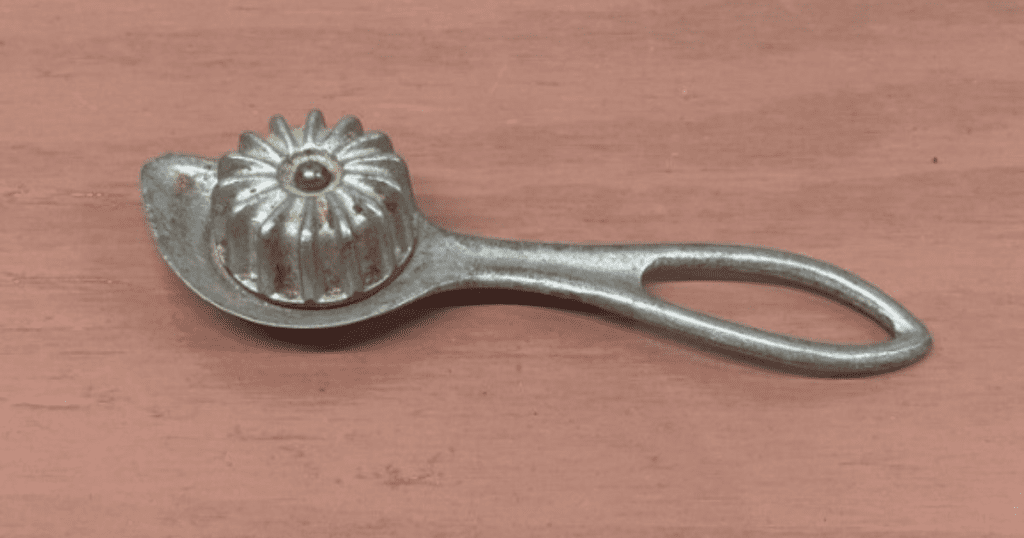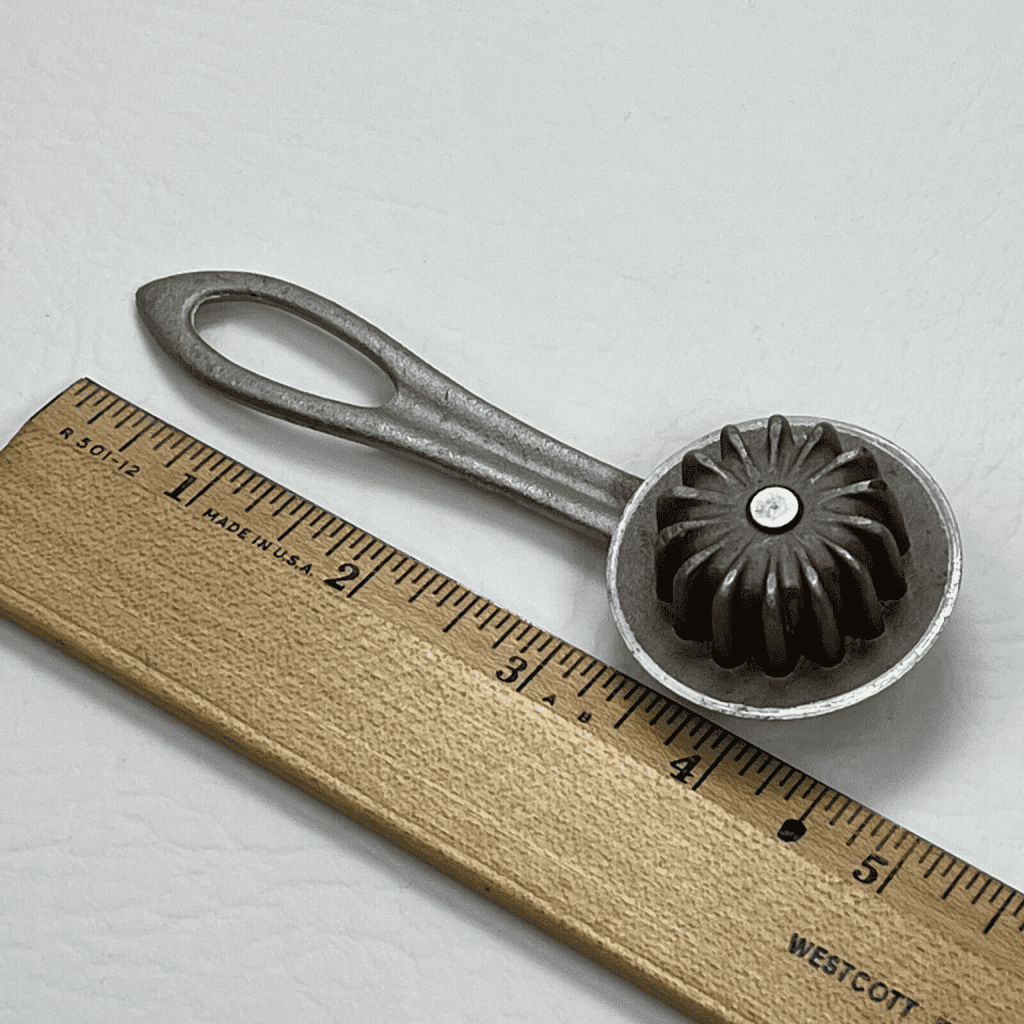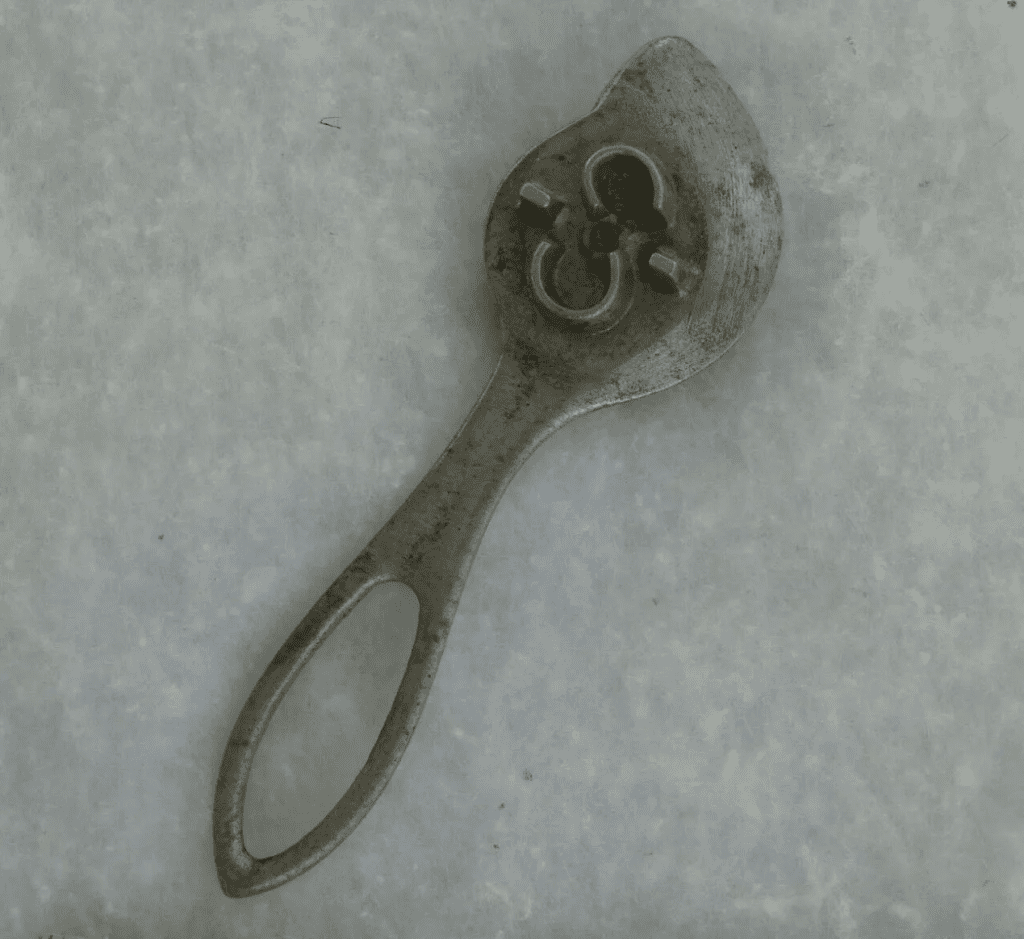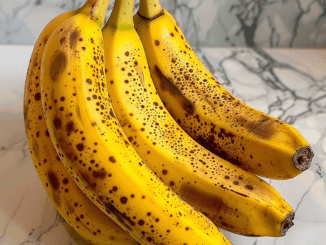There’s something magical about those Sunday afternoons spent at Grandma’s house. The air would be thick with the comforting scent of freshly baked pies, the clatter of well-worn baking tools filling the room. Among these cherished items was one simple yet indispensable gadget—a pie crust crimper. From the 1950s to the 1980s, this humble tool was a staple in many kitchens, crafting the beautifully crimped edges of pies that we remember so fondly.

The Pie Crust Crimper: A Tool of Tradition
The pie crust crimper was more than just a kitchen tool; it was a symbol of home, tradition, and love. Back in the 50s and 60s, baking was a labor of love, and the crimper was an essential part of that ritual. Whether you were baking apple pies for a family gathering or teaching a young one how to crimp their first pie, the crimper was always there, transforming simple dough into art.
This little tool, with its fluted wheel and sturdy handle, was essential in every household. It wasn’t just for making the pie look pretty—the crimped edges also served a practical purpose. They helped to seal the crust, locking in the sweet, flavorful fillings. In a time before fancy kitchen gadgets, the pie crust crimper stood out as both functional and elegant.
Before Pre-Made Pie Crusts: A Time of Homemade Excellence
Long before the convenience of pre-made pie crusts found on supermarket shelves, homemade pies were the norm, and the pie crust crimper played a starring role. In those days, pie baking was an art form passed down from one generation to the next. Mothers and grandmothers would spend time teaching their children how to make the perfect crust, and the crimper was the final touch that made the pie complete.
For many, these crimped edges were a source of pride—a reflection of the baker’s skill and dedication. Each pie was not just a dessert but a testament to the hard work and love that went into preparing it. This sense of tradition, of taking the time to create something with care, is what made the pie crust crimper such a valuable tool in those homes.
Design and Durability: Built to Last
The design of the pie crust crimper has been relatively simple throughout its history, yet its impact is undeniable. With a fluted wheel attached to a handle, often made from wood or metal, the crimper was both durable and practical. Its origins can be traced back to the 19th century, but its popularity soared in mid-20th century America, during the golden era of home cooking.
The fluted wheel of the crimper gave pies their distinct scalloped edges, adding an aesthetic flair that elevated even the simplest dessert. But the tool wasn’t just about looks. Its design helped to press the top and bottom crusts together, ensuring that no filling would seep out during baking. The pie crust crimper was the perfect blend of beauty and functionality—a true testament to the ingenuity of past generations.

Memories in the Making: Family and Food
As we reminisce about these vintage kitchen tools, it’s impossible not to think about the memories they helped create. The pie crust crimper was often part of the process when families gathered in the kitchen to bake together. There were laughs, stories shared, and lessons passed down. For many of us, the act of crimping pie crusts with Grandma became a cherished tradition—a way of connecting through food.
Rolling out the dough, pressing the edges with the crimper, and watching the pie bake in the oven—these simple actions hold a wealth of meaning. The pie crust crimper wasn’t just shaping the dough; it was helping to create moments of togetherness, moments that would be remembered long after the pie was gone.
A Symbol of Tradition and Love
The pie crust crimper stands as a symbol of tradition, reminding us of the values passed down from one generation to the next. It speaks to the importance of family, of taking the time to create something with your hands, and of sharing that creation with loved ones. When you walk into your grandmother’s kitchen and see her hands expertly working with the crimper, you know that this is more than just baking—it’s an act of love.
Even today, the pie crust crimper continues to represent this connection between family, food, and tradition. It evokes nostalgia for a time when life moved a little slower, when making a pie from scratch was something to be proud of. For those lucky enough to have shared those moments in the kitchen, the crimper will always be more than just a tool—it will be a reminder of home.
A Cultural Artifact of Home Baking

In today’s fast-paced world, the pie crust crimper may seem like a relic of the past, but it still holds cultural significance. It represents the craftsmanship and care that went into home baking during a time when food was more than just sustenance. The crimper stands as a cultural artifact, a tangible reminder of the artistry that defined mid-century American kitchens.
While technology and convenience have changed how we bake today, the pie crust crimper remains a beloved tool for those who value the charm and nostalgia of vintage kitchen equipment. Its simple design and enduring function continue to capture the hearts of home bakers and collectors alike.
Conclusion: The Enduring Legacy of the Pie Crust Crimper
The pie crust crimper is a tool that transcends its practical function. It’s a piece of our history, a symbol of home, and a testament to the values of family and tradition. Whether you use it to make pies today or keep it as a cherished memento from your grandmother’s kitchen, the crimper carries with it the legacy of love, creativity, and craftsmanship that defines the best of home baking.
Next time you make a pie, consider using a pie crust crimper. Not only will it add a touch of vintage charm to your dessert, but it will also remind you of the joy and connection that comes from baking with loved ones. The simple act of crimping a pie crust can bring back a flood of memories, reminding us that, sometimes, the most meaningful moments in life happen in the kitchen.


